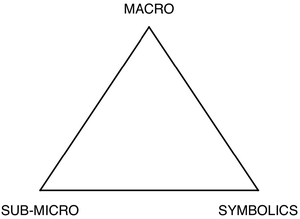
All matter on earth exists in one of three states: solid, liquid, and gas. We can view and represent them in one of three different ways, as depicted in the diagram above. In this activity we will be attempting to make models at the particulate (sub-micro) level of each of the three states of matter depicted in the videos (macro level) provided in this lesson.
You should have a resealable snack bag containing:
You will also need a smartphone with an app that allows you to combine several pictures into one collage (such as Pic Stitch).
Note: Remember that mercury exists as an "atomic" element whereas oxygen exists as a "molecular" element. Your models should reflect this fact.
View this video and create a particulate model of mercury in the state of matter primarily depicted in this video (solid). You must use 10 "particles" of mercury on the large LEGO plate. When you have finished, take a picture of your model.
View this video and modify the model you made previously to create a particulate model of mercury in the state of matter depicted in this video. You must use the same 10 "particles" of mercury on the large LEGO plate. When you have finished, take a picture of your model.
Note: This video is of a mercury fountain at the Fundació Joan Miró in Barcelona, Spain.
Modify the model you made previously to create a particulate model of gaseous mercury. You must use the same 10 "particles" of mercury on the large LEGO plate. When you have finished, take a picture of your model.

When you have finished you should make a collage picture that clearly contains all three of the pictures you have taken of your particulate models of mercury in each of the three states of matter. You need to label each individual picture in the collage as solid, liquid, or gas. Moreover, you should label the collage pic with the name of the element you are depicting.
When you have a labeled collage picture that you like, you should turn it in to your instructor per the specific instructions they have provided to you.
View this video and create a particulate model of oxygen in the state of matter primarily depicted in this video (solid). You must use 10 "particles" of oxygen on the large LEGO plate. When you have finished, take a picture of your model.
View this video and modify the model you made previously to create a particulate model of oxygen in the state of matter depicted in this video. You must use the same 10 "particles" of oxygen on the large LEGO plate. When you have finished, take a picture of your model.
Modify the model you made previously to create a particulate model of gaseous oxygen. You must use the same 10 "particles" of oxygen on the large LEGO plate. When you have finished, take a picture of your model.

When you have finished you should make a collage picture that clearly contains all three of the pictures you have taken of your particulate models of oxygen in each of the three states of matter. You need to label each individual picture in the collage as solid, liquid, or gas. Moreover, you should label the collage pic with the name of the element you are depicting.
When you have a labeled collage picture that you like, you should turn it in to your instructor per the specific instructions they have provided to you.